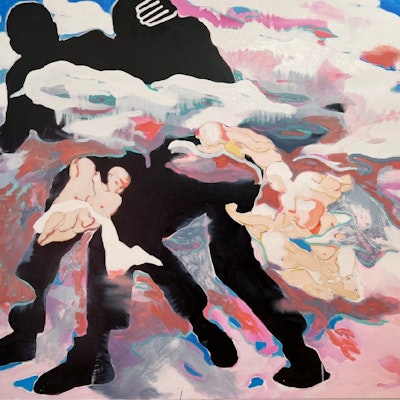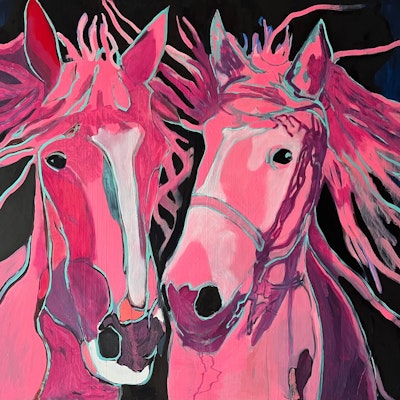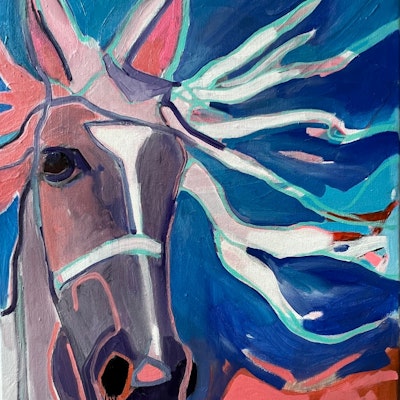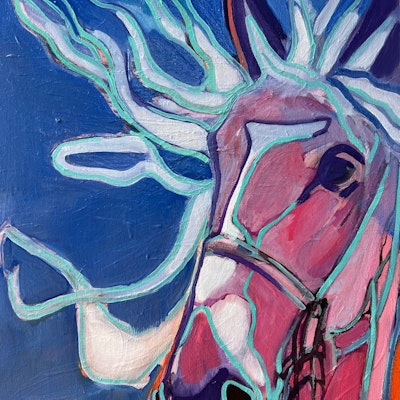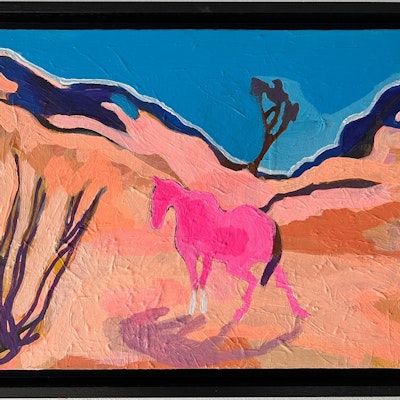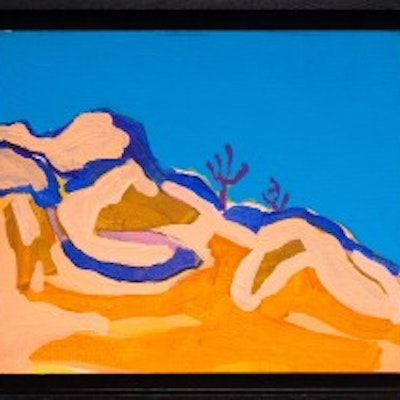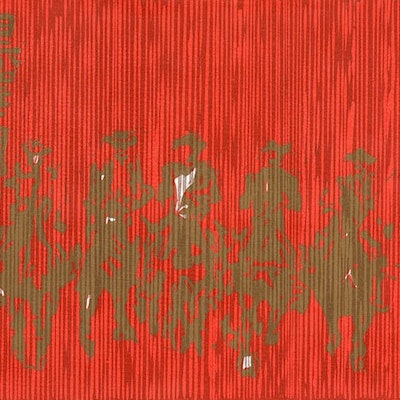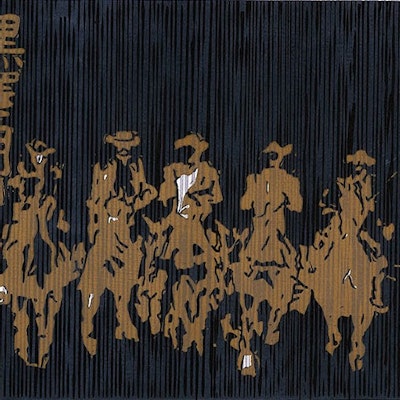Trish Wylie
TRISH WYLIE
New work above - Desert Cowboys & American Bison Comeback and more …
ALL THE PRETTY HORSES
CAREY BLYTH GALLERY October 2023
Text by Jenny Blyth © 2023
Trish Wylie, originally from Stockwell, is a Londoner through and through, a painter with a love of horses and Westerns. Although she abandoned London for West Bay on the Dorset coast to raise a young family, she returned in 2010 to the hustle and bustle of the city at 53 years of age with two daughters, settling happily in Shepherd’s Bush. Strange then, one might suppose, for a city girl to have such a profound love of horses, and more so Westerns. Her studio desk space is studded with prints of horses - Film Stills, traced, drawn and washed in inks… Her paintings have a cinematic sensibility – cool and glamorous, with strong lines and flat planes of colour in oil on canvas. The reds, blacks and purples are unapologetic, and lend an immediacy we associate with Pop Art.
True, that as a child of the 60s & 70s she grew up on a diet of TV Westerns. TW was and remains, a tomboy. One of a gang with older brothers, she recalls clambering over corrugated sheet metal fences. Games such as Stallions were of their imagination, their roles influenced by the idealised heroics of cowboys on the Frontier borderlands that inspired the Westerns that they loved. The Magnificent Seven, How The West Was Won, The Misfits and Spaghetti Westerns of Sergio Leone are amongst her favourites, and inspiration for All The Pretty Horses. But more particularly, her father made harnesses for the working horses that turned the trains and delivered goods at Camden. She recalls, as a child, the sound of horses kicking stable doors of a morning. Her parents had run away together from Ireland where her father was employed as a Saddler for Trish’s grandfather. So for Trish, as for her parents and grandparents, horses are in the blood.
Perhaps it was those early years where she first wisted after the adventure and heroics of the characters that now fuel her paintings. Gender precluded but informed her mind’s eye. Born into an Irish Catholic family, one of ten siblings born in quick succession, she describes her mother as ‘powerless, without control’. TW’s palette reflects her thoughts, reversing archetypal gender colour assumptions as she transposes blues with pinks. Sisters I & II, in red and pink on black, originated from police horses she observed on parade in Holland Park - male horses in reality that she has infused with motifs of leaping horses she discovered at the Design Museum. Assigning female gender, TW has caught the unbridled energy of young male horses, jostling for position as they run together. Effectively she has released them back to the wild on canvas - young stallions in the making.
TW studied Fine Art at Camberwell School of Art incorporating film and psychology, specifically crime and punishment, into her chosen modules. John Sturges’ Magnificent Seven inspired by Akira Kurosawa’s Seven Samurai is core to TW’s new work such as Desert Cowboys. AK drew on a lifetime study of drama from Shakespeare to Dosteovsky when creating his films. The severity of action and consequence in plots from King Lear to Crime & Punishment resonated with codes of honour prescribed for Samurai warriors - Japan had long been forbidden access to Western culture, particularly American Westerns, so in effect AK created a Japanese Western. In TWs linocuts of The Magnificent Seven, vertical streaks etched into the surface of the linoleum emulate the rain as the riders are carried forward by their horses running together shoulder to shoulder.
In 2019, TW spent six weeks on the West Coast of California, and ten days in the Mojave Desert in a mobile home, alone. Brutal in the summer months, and too hot to sustain horses with only 3-5 inches of rain a year, the desert was once a hideaway for outlaws and hunting ground for posses. Home to Death Valley and Furnace Creek with temperatures the hottest recorded on Earth at over 56 degrees, homesteaders and pioneers died crossing the desert in their quest for gold, or to make a new life in California. The southern region of the Mojave Desert is straddled by the Joshua Tree National Park named after the succulent Joshua Trees pollinated by yucca moths, but wildlife, prescribed by the harshest of terrains and climate, ranges from scorpions and snakes to road runners, jack rabbits and mountain lions. TW explored the Mojave in the Autumn, feeding the tones of the desert into her work.
Whereas earlier paintings, scaled up from smaller collaged studies, featured the violent ‘heroism’ of adventure in the Wild West as glamorised by the film industry, TW’s most recent work steps away from the lawlessness of an untamed land where gun laws continue to define and determine behaviour. Her new paintings celebrate the spirit of freedom portrayed so beautifully in Cormac McCarthy’s Borderland Trilogy All The Pretty Horses. Identifying the riders simply by the brim and curl of their hats, the jangle of spurs and the squeeze of leather, the horses are the stars of the show – you can hear the thunder of their hooves, the sound of their breath and the speed as they run. Trish Wylie does not seek to recreate figurative semblance, more the spirit of the horses in the moment, their exuberance and primal energy. Rearing horses feature predominantly, wild creatures, at one with a wild land.








